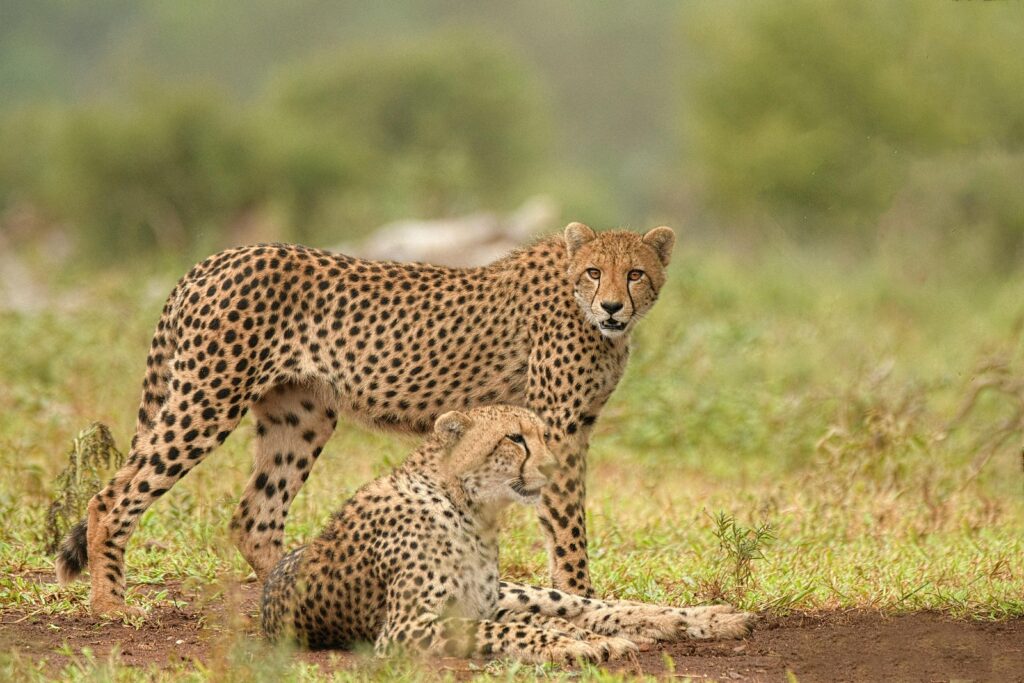
In a groundbreaking effort to reintroduce an iconic species once extinct from Indian soil, the cheetah has finally found a new home in the forests of Madhya Pradesh. This historic milestone marks a significant leap in wildlife conservation, ecological restoration, and global collaboration. After decades of planning, international partnerships, and ecological studies, the majestic spotted felines have now taken their first steps on Indian land, rekindling hope for a more biodiverse and ecologically balanced future.
The Return of a Lost Predator
Cheetahs, once widespread across the Indian subcontinent, were declared extinct in India in 1952 due to rampant hunting, habitat destruction, and a lack of conservation policies. For over 70 years, India remained without one of its top natural predators. But that long silence has now been broken with the arrival of cheetahs from Africa—carefully selected, medically assessed, and translocated to the Kuno National Park in Madhya Pradesh.
Located in the Sheopur district, Kuno National Park was chosen after extensive evaluations of habitat suitability, prey availability, climate, and minimal human interference. The landscape—comprising dry deciduous forests, grasslands, and riverine vegetation—was deemed ideal for rewilding the cheetah, a species known for its reliance on open landscapes for high-speed chases.
The Translocation Process: A Global Collaboration
The reintroduction project was spearheaded by the Indian government in collaboration with wildlife experts, conservation biologists, and government authorities from Namibia and South Africa, where healthy populations of wild cheetahs still roam free. In the latest phase of the project, a group of cheetahs—comprising both males and females—was translocated via chartered aircraft, covering nearly 8,000 kilometers in a meticulously planned and monitored journey.
Each cheetah was fitted with a satellite GPS collar for real-time monitoring. Upon arrival, they were placed in specially designed acclimatization enclosures, where they remained under close observation by forest officials and veterinary teams. This period allowed the cheetahs to adapt gradually to the new landscape, climate, and prey species before being released into larger open zones within the park.
Dr. Rajesh Sharma, one of the lead veterinarians overseeing the transition, noted, “It’s a delicate process. Cheetahs are extremely sensitive animals, and even minor environmental stressors can impact their behavior. We are monitoring their movements, health, and feeding habits round-the-clock.”
Ecological Significance and Conservation Goals
The cheetah reintroduction is not merely about bringing back a species—it’s a carefully crafted ecological intervention. Cheetahs play a crucial role as apex predators, helping control herbivore populations and maintaining the balance between various species in the ecosystem.
Environmentalist and rewilding expert Dr. Anita Verma emphasized, “This initiative is a symbol of ecological healing. By restoring a lost predator, we are also restoring ecological processes. A balanced predator-prey dynamic contributes to healthier forests, grasslands, and a more stable environment.”
The project is part of a larger government initiative under the “Action Plan for Introduction of Cheetah in India,” which outlines a phased approach to establishing a viable, self-sustaining cheetah population across Indian landscapes. If successful, the plan could eventually lead to the translocation of cheetahs to other suitable habitats like Rajasthan and parts of Gujarat.
Community Engagement and Sustainable Coexistence
The success of this ambitious project hinges not only on biological science but also on community involvement. Local villagers residing in areas adjacent to Kuno National Park have been actively engaged in the project through awareness programs, conservation workshops, and livelihood initiatives.
Government officials have offered relocation and compensation packages to families affected by the expansion of protected zones. Additionally, eco-tourism initiatives are being developed to provide sustainable income sources to the local population while also fostering a sense of pride in the conservation effort.
Sarpanch Meena Devi, a community leader in the region, shared, “At first, there was fear—people were unsure about what bringing cheetahs here would mean. But after many meetings with forest officials and seeing the preparations, the community feels hopeful. We believe this can bring progress, tourism, and even jobs.”
Monitoring and Long-Term Strategy
The cheetahs’ progress will be tracked using both satellite telemetry and ground patrols. Forest rangers and biologists are trained to recognize signs of stress, injury, or illness, and response teams are on standby to address any emergencies. In the coming months, researchers will study the cheetahs’ hunting success, territory establishment, interaction with native species, and adaptation to India’s unique ecological conditions.
The project’s success could inspire other nations to take up similar rewilding projects for endangered or locally extinct species. Experts around the world are closely watching India’s cheetah project as a model for global species restoration.
The Road Ahead: Hope and Caution
While the project has been met with excitement and optimism, conservationists caution that the road ahead will not be without challenges. Threats such as human-wildlife conflict, climate variability, and habitat encroachment still loom large. Success will require consistent monitoring, adaptive management, policy support, and above all, patience.
“We must remember that conservation is a marathon, not a sprint,” said Dr. Verma. “Reintroducing a species takes time, and the ecosystem needs to adjust. But with the right measures and collective commitment, we can write a new chapter in India’s conservation story.”
Conclusion
The return of the cheetah to India is more than just an ecological experiment; it’s a symbol of hope, resilience, and responsibility. In the golden grasslands of Madhya Pradesh, as the sun sets behind the Sal and Palash trees, a new silhouette now graces the horizon—sleek, swift, and spotted. The cheetahs are home again, and with them comes a renewed promise to protect the wild heart of India.